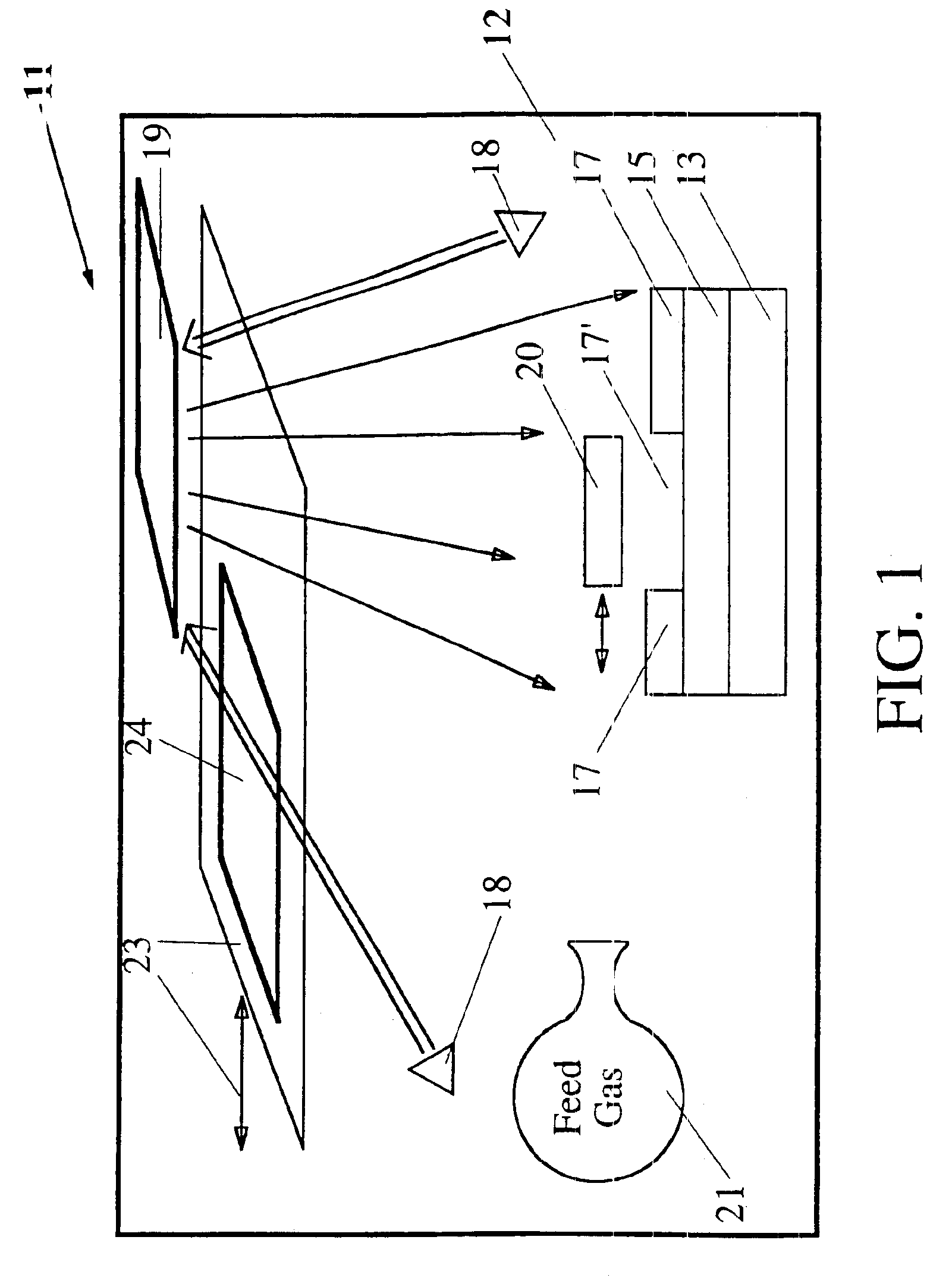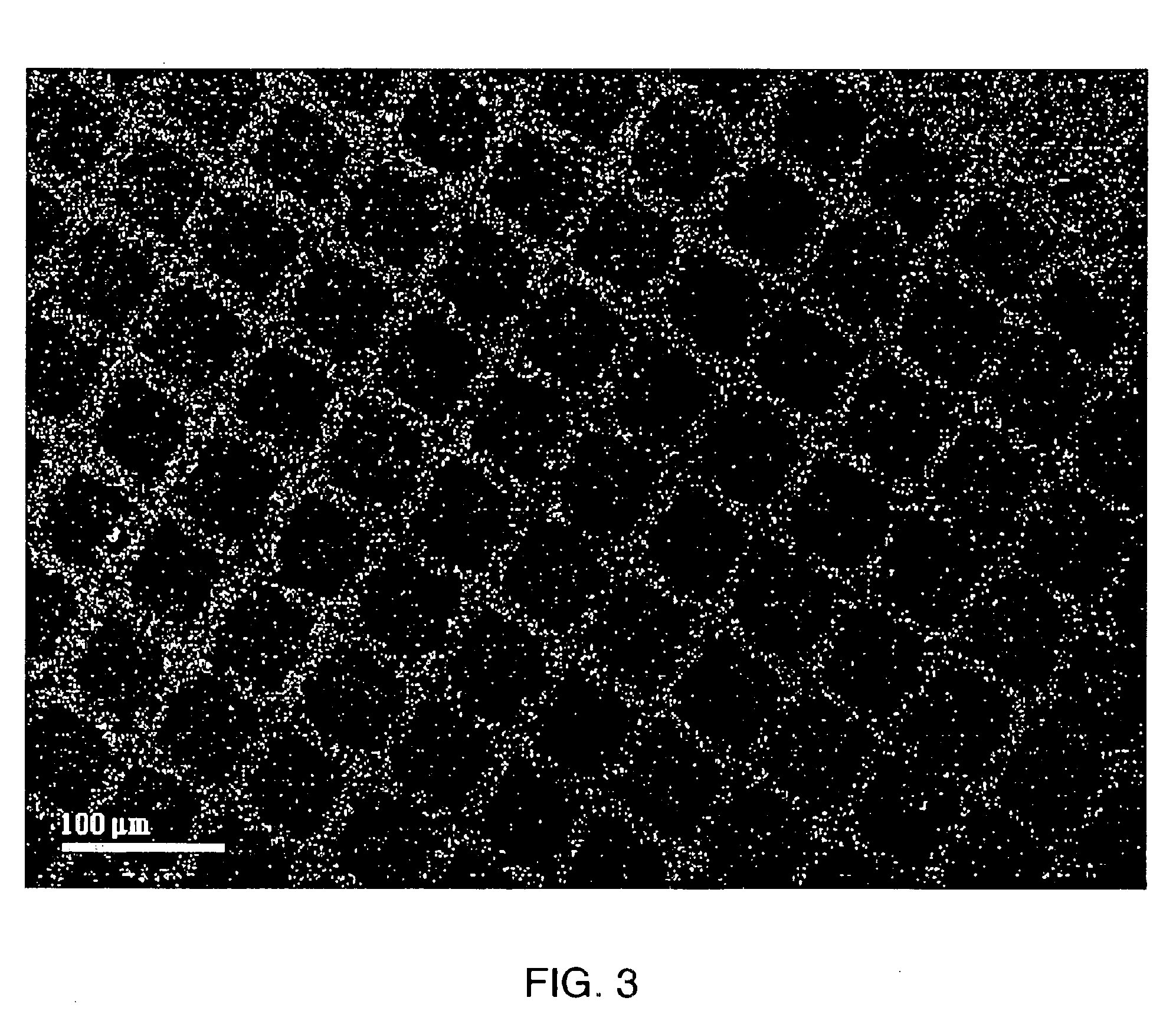Controlled patterning and growth of single wall and multi-wall carbon nanotubes
a carbon nanotube and patterning technology, applied in the direction of carbonsing rags, chemistry apparatus and processes, fibre chemical treatment, etc., can solve the problems of difficult or impossible patterning of finely detailed arrays of such structures, difficult to discriminate between, and control the growth,
- Summary
- Abstract
- Description
- Claims
- Application Information
AI Technical Summary
Benefits of technology
Problems solved by technology
Method used
Image
Examples
Embodiment Construction
FIG. 1 illustrates a system 11 for generating and controlling patterned growth of an array of SWNTs. A substrate 13 located in a chamber 12 is coated with a first layer 15 (optional) of a selected first metal, preferably Al and / or Ir, having a thickness of at least 1-10 nm (for Al) or 5-20 nm (for Ir). A thicker first layer can be used but does not produce any significant changes in the array thus produced. Optionally, the first layer 15 has a multi-layer structure, including a first sub-layer 15A of a metal or alloy, such as Pt, Pd, Cr, Mo, Ti and / or W, that has selected electrical conductivity properties, and a second sub-layer 15B, preferably Al (thickness ≧1-10 nm) or Ir (thickness ≧5-20 nm), that provides a structure for a catalyst layer 17. Use of a second sub-layer 15B also allows growth of SWNTs, MWNTs and NFs on a (coated) substrate that is not compatible with the catalyst. An example is use of highly oriented pyrolytic graphite (HOPG) or amorphous carbon on the substrate. ...
PUM
 Login to View More
Login to View More Abstract
Description
Claims
Application Information
 Login to View More
Login to View More - R&D
- Intellectual Property
- Life Sciences
- Materials
- Tech Scout
- Unparalleled Data Quality
- Higher Quality Content
- 60% Fewer Hallucinations
Browse by: Latest US Patents, China's latest patents, Technical Efficacy Thesaurus, Application Domain, Technology Topic, Popular Technical Reports.
© 2025 PatSnap. All rights reserved.Legal|Privacy policy|Modern Slavery Act Transparency Statement|Sitemap|About US| Contact US: help@patsnap.com



